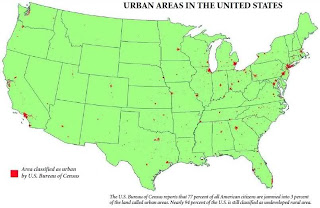For better or for worse, the US News and World Report
rankings have become integral to how high school seniors view colleges. The rankings, which are debatably arbitrary,
create a hierarchy of universities that often dictates where students apply to and
attend. This map examines the university
rankings from a geographic viewpoint in order to see if there are any
geographic biases or trends in the schools that get the top rankings. Evidently, the northeast has monopolized the
rankings, as eight of the top twenty-five and all of the top four universities
are located between Washington D.C. and Boston.
Another unexpected trend is the lack of highly ranked universities on
the West Coast. In fact, outside of
California, there are no universities in the top twenty west of the United
States’ geographic center.
Most
of the pit-falls of neogeography lay either incorrect interpretation of
geographic data. For instance, one could
conclude from my map that higher education is simply better on the east coast,
yet this is a flawed assertion. This map
is only a map of the top-ranked universities, which are not necessarily the
twenty-five objectively best universities.
In addition, mashups cannot communicate certain data that might be
influential to the interpretation of the map.
For instance, UCLA and the California Institute of Technology both
appear as equal sized pins on the map, yet UCLA has over thirty times the
undergraduate enrollment of Cal Tech. In
this way novice mapmakers can create misleading mas that lend themselves easily
to false interpretations.




